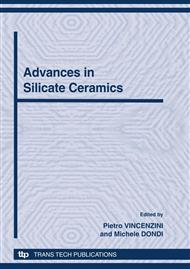p.1
p.13
p.23
p.31
p.38
p.44
p.53
New Development in the Non Contact Optical Measurement of Thermo-Mechanical Properties of Materials
Abstract:
The optical measurement of thermo-mechanical properties allows the sample to be completely free from constraints. This enables the possibility to measure the true change in size or volume of a material during a sintering process. Thanks to the fact that the measure is carried out with no contact in becomes possible to carry out other measurements during the test, like the change in mass. Joining a double beam optical dilatometer and an electronic scale we can measure simultaneously the change in size with a resolution of one part over 100.000 and the change in weight of the specimen, with a resolution of 1 part over 10.000. Moreover, thanks to a innovative temperature controller design, the heat treatment can be designed with complete freedom, even from a mathematical formula (i.e. sinusoidal or exponential) and it can be controlled by the change in size of the specimen during the test. This makes it possible to perform the controlled rate sintering (shrinkage) even if the driving force of the sintering process is the viscous flow of glassy phases, like in traditional ceramics.
Info:
Periodical:
Pages:
23-30
Citation:
Online since:
October 2010
Authors:
Price:
Сopyright:
© 2010 Trans Tech Publications Ltd. All Rights Reserved
Share:
Citation:


